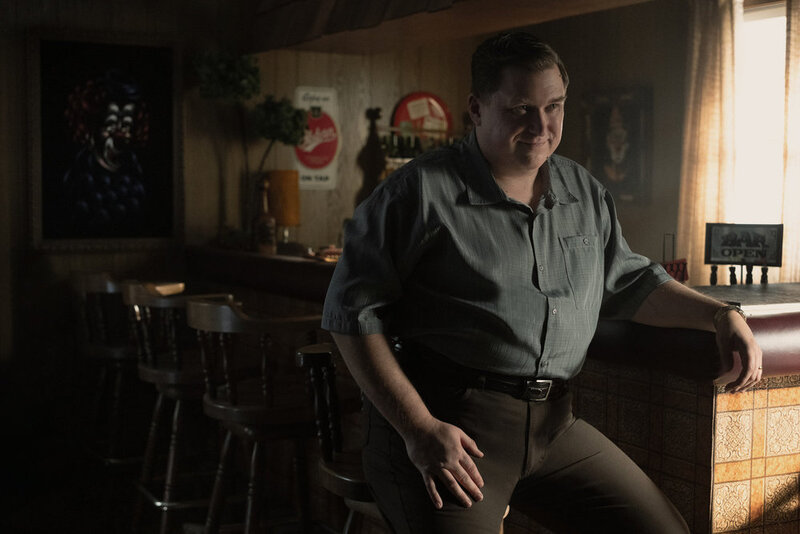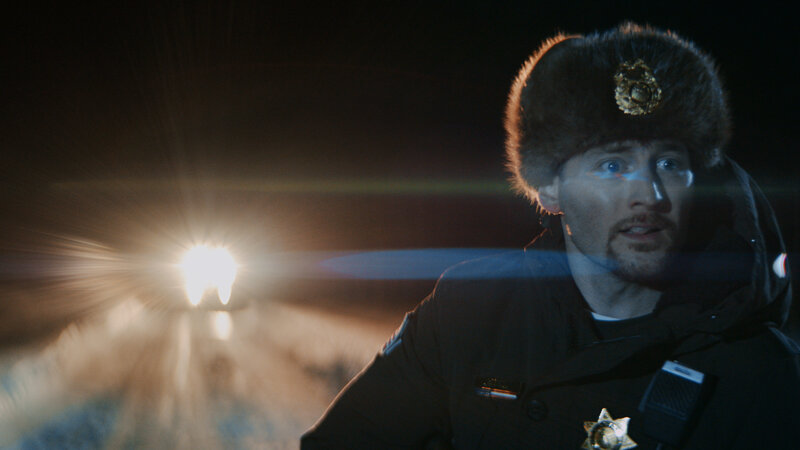
Memory Over Mythology, Justice Over Thrills
TV SERIES REVIEW
Devil in Disguise: John Wayne Gacy
–
Genre: Crime, Drama, True Crime, Limited Series
Year Released: 2025
Runtime: 8 x 60m episodes
Director(s): Larysa Kondracki, Ashley Michel Hoban, Maggie Kiley, Bille Woodruff, Patrick Macmanus
Writer(s): Patrick Macmanus, Gregory Locklear, Matthew White, Yasmin Almanaseer, Sebastián Rea, Ashley Michel Hoban, Ahmadu Garba
Cast: Michael Chernus, Gabriel Luna, James Badge Dale, Michael Angarano, Chris Sullivan, Marin Ireland
Where to Watch: premieres on Peacock on October 16, 2025
RAVING REVIEW: DEVIL IN DISGUISE: JOHN WAYNE GACY makes an early promise—it’s not here to mythologize a murderer. It’s here to look at the people left behind, the ones who refused to stop asking questions. Instead of another “monster study,” the series reframes the story through victims’ families, determined investigators, and a city that failed to see what was in plain sight. It’s a patient, unsensationalized retelling that trades spectacle for consequence, and in doing so, finds a rare kind of power: empathy without indulgence. (There’s still plenty of Gacy for the diehards out there, and I would argue this was one of the most chilling portrayals put to screen.)
From the first episode, the show’s structure makes its intent clear. Each chapter is titled for a person, not an act, and each returns to the Piest family—their loss, their fight, their insistence on being heard. The story doesn’t rush toward discovery; it walks the path of institutional neglect. Paperwork misplaced. Leads ignored. Interviews dismissed. By dwelling in the grind rather than the gore, the series reveals where real horror lives—not in crawl spaces, but in complacency. The message is simple and devastating: when systems fail to listen, violence multiplies quietly.
Michael Chernus faces the near-impossible task of portraying John Wayne Gacy without turning him into a sideshow. His performance is unsettling precisely because it’s small. He doesn’t play a villain; he plays a man who passes as ordinary. The smiles are off by a degree, the charm too effortless, the pauses too calm. Chernus understands that the scariest thing about Gacy wasn’t his disguise—it was how easy it was to believe it. The show’s refusal to depict explicit violence amplifies that truth: the performance itself becomes the weapon.
Gabriel Luna gives the series its backbone as the investigator unwilling to let the case stall. He’s not built from TV-cop bravado; he’s deliberate, tired, and relentless. James Badge Dale complements him as the leader trying to hold a fracturing system together. And Marin Ireland gives the story its heart. Elizabeth Piest brings the raw, grounded grief of a mother who refuses to fade into a statistic. The series allows her the space to be angry, exhausted, and complex—a person, not a symbol. It’s through her that the story finds its pulse.
The rotation of directors keeps that focus intact. Larysa Kondracki’s opening episode establishes the mood: muted color, restrained pacing, and emotional distance that mirrors institutional detachment. Maggie Kiley’s entries deepen the story by shifting perspective, while Bille Woodruff sharpens the procedural aspect in the later episodes as media pressure builds. Patrick Macmanus closes the series by returning to the aftermath—less a conclusion than an acknowledgment of everything that still lingers. We know the story, but this series explores the who, what, where, and as much as possible, the why.
DEVIL IN DISGUISE makes deliberate choices that accumulate. Silence isn’t filler here—it’s punctuation. Empty rooms, quiet hallways, and the hum of fluorescent lights do more damage than any flashback could. Violence remains offscreen, and that absence forces reflection rather than reaction. The show trusts the viewer to understand what isn’t shown, using stillness as its form of respect. It refuses to turn trauma into entertainment. The tension comes not from what might happen next, but from realizing how long it took for anyone to act.
Its themes are clear and quietly damning. First, the seduction of normalcy—the way communities reward performance over truth. Second, the architecture of failure—the laws, habits, and blind spots that protect predators more than victims. And finally, the burden of the living—those who have to keep surviving inside stories that were never meant to honor them. The show simply presents people doing the hard work of being human when systems look the other way.
The supporting cast builds that moral ecosystem. Michael Angarano gives nuance to a young defense attorney caught between principle and disgust, and Chris Sullivan portrays the prosecutor as a man more loyal to process than glory. Many of the roles serve the same idea: the fight for justice is rarely cinematic—it’s procedural, exhausting, and often thankless. That realism anchors the show in truth rather than trope. I know that doesn’t sound exciting, but there’s more depth here than I could have ever imagined.
Chicago itself becomes something more, shown without cliché. There’s no noir romanticism, no postcard fantasy. Instead, it’s unions, churches, small businesses, and a sense of trust that made the horror possible. The banality of the setting is its own indictment—evil didn’t hide in the shadows; it thrived in daylight, surrounded by neighbors who didn’t want to see.
What DEVIL IN DISGUISE gets absolutely right is perspective. It shifts the importance away from the killer and places it where it always should’ve been—on the people who endured, searched, and demanded better. It doesn’t build tension through horror; it creates accountability through empathy. By the time it ends, what lingers isn’t fear, but responsibility.
DEVIL IN DISGUISE: JOHN WAYNE GACY is sober, humane, and deeply considered. It removes the grotesque from true crime and replaces it with truth—an insistence that remembering is not the same as glorifying. It doesn’t chase the darkness; it studies the systems that let it flourish. The result is a rare kind of clarity, a series that proves restraint can cut deeper than spectacle, and that the real horror was never just one man—it was everything that let him continue.
Please visit https://linktr.ee/overlyhonestr for more reviews.
You can follow me on Letterboxd, Instagram, Twitter, and YouTube. My social media accounts can also be found on most platforms by searching for 'Overly Honest Reviews'.
I’m always happy to hear from my readers; please don't hesitate to say hello or send me any questions about movies.
[photo courtesy of PEACOCK, LITTLETON ROAD PRODUCTIONS, NBC NEWS STUDIOS, UNIVERSAL CONTENT PRODUCTIONS (UCP)]
DISCLAIMER:
At Overly Honest Movie Reviews, we value honesty and transparency. Occasionally, we receive complimentary items for review, including DVDs, Blu-rays, CDs, Vinyl Records, Books, and more. We assure you that these arrangements do not influence our reviews, as we are committed to providing unbiased and sincere evaluations. We aim to help you make informed entertainment choices regardless of our relationship with distributors or producers.
Amazon Affiliate Links:
Additionally, this site contains Amazon affiliate links. If you purchase through these links, we may receive a commission. This affiliate arrangement does not affect our commitment to honest reviews and helps support our site. We appreciate your trust and support in navigating these links.



Average Rating